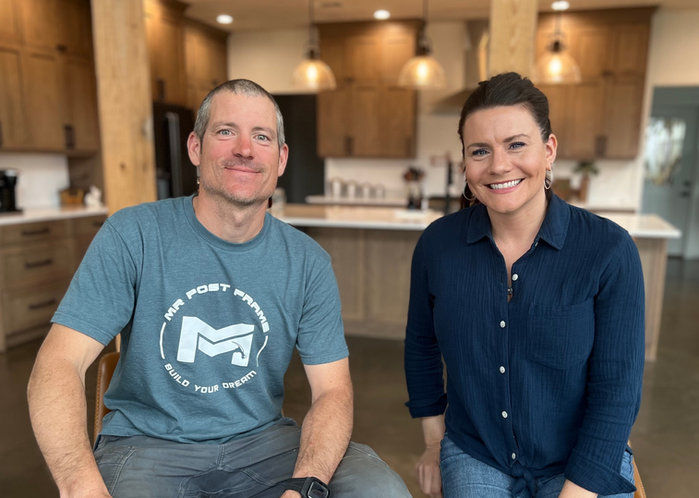The Barndo Build | Day 6: Building + Standing End Wall | Ep 6
- MR Post Frame
- May 22, 2024
- 3 min read
It's day six here at Westbury Acres. We've already erected the other 80-foot wall and the team is just nailing off all the boards where they connect. Our goal for today is to finish up that wall. While they're finishing that up, I'll be putting in the bolts. Then, we'll move on to building out this end wall. We've got a tele handler coming tomorrow, so hopefully, we can start the trusses tomorrow. However, there's rain in the forecast, so we'll see how that goes. Let's get after it!

Alright, guys, we're starting to lay out this end wall. We've got all our columns cut and laid out. Now, we just have to square up our columns so we can start laying two by sixes across. What I'll do is, for the first column from the end, I'll hook my tape measure over the edge of the column at the top (closest to base). Then, I'll go out to my string line or my mark and see what that measurement is. After that, I'll go to the bottom of my truss mark and match that. This column might have some variance, so to start, I match the top to the bottom. Now, I can measure off the bottom of that column to the second one, match to the top, and work my way all the way across.
Then, I'll lay out all my two by sixes where I want them and repeat that process to start securing them. There are six columns here, so I'll lift them in pairs. As long as you take your time and match your bottom measurement to where your truss is going to sit, it's pretty simple. Sometimes, I can tell one is off just by the way it's sitting in its bracket. I'll get a measurement at the bottom and then move the top before I finish securing it.
After I am sure that all the columns have been squared up, I can move on to placing the girts I first carefully lay them all out, then go back and nail them in. Doing the entire layout process on the ground makes it much easier for later. You can just simply lift the walls in a couple different sections and secure them in place.

The last time we were doing a 60 by 80 building, we had a tornado come through. The chance of another tornado coming through is probably slim, but that was not fun. It took me two days to fix that building, which cost me money. So, I poured piers on the outside and the inside, put rebar so I have something to tie my end walls to keep them stable if we get some really high winds. I mean, they had 80 mile-an-hour winds, and our building survived, but I don't want to have to spend two days straightening it out again. So, we're taking precautions. The ones on the outside, I'll just pull out and take with me. The ones on the inside, we'll cut the rebar off or just smash it down and leave them so they're not in the way. These columns right here are over 30 feet tall, so we've got to get some bracing going each way.

That's going to be a wrap on today's post. Hopefully, you found it insightful and enjoyable. It was a short post but an essential step in your project. The next blog will cover trusses and purlins, and I'll go into depth on how we overlap purlins and all that kind of good stuff. Don't forget we have a Patreon for self-builders where we talk about different self-building topics. We offer design services; you can check those out on our website. We have lots of services, so definitely go explore everything we have to offer at MR Post Frame.
Thank you,
MR Post Frame

Patreon Group:
Interested in tackling your build on your own? If you want to explore the possibility of being your GC or self-building, our Patreon membership is for you! It's a community of like-minded people offering support, discounts, Q/A, and more.